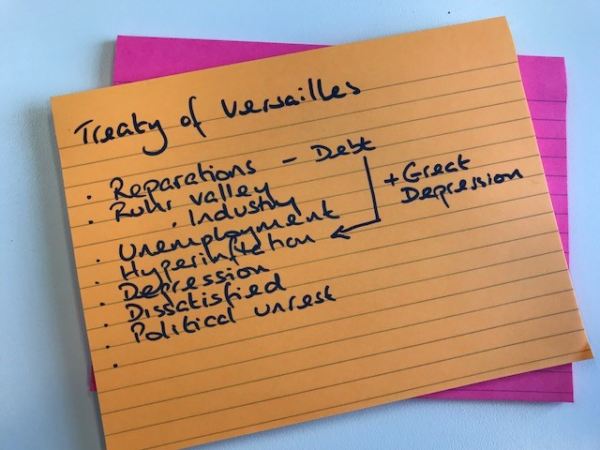I’ve been very fortunate to travel the world and work in classrooms in the United States, Australia, Asia, and the U.K., and have seen phenomenal teaching everywhere I go. However, administrators tell me the challenge is how to effectively take that practice and scale it for every teacher in the district. How do we apply that brilliance across year levels, subject areas, and student demographics? And how do we measure the impact of different teaching methods in terms of how they’re improving student outcomes? Put simply, to shift the quality of learning in schools, we need to better support teachers with evidence of learning so they can focus their effort on doing the things that work really well for every learner in the room.
Teachers report that when they look at professional learning, they ask three questions:
- What am I learning?
- How will I apply it in class?
- What impact will it have on every student in the room?
If we can give teachers visibility on those three things, they’ll start to own their professional learning activities and how they practice their craft. Here are four ways that districts can replace traditional sit-and-get professional development (PD) with on-demand and personalized delivery of high-impact teaching strategies (HITS).
1. Better teaching, five minutes at a time
HITS are not necessarily new ways to teach. Rather, they’re well-researched pedagogical methods that have been proven to work. Teachers ask us: “What can I do within an existing lesson that might take five minutes that will get every student engaged in the learning?” Verso offers teachers easy-to-implement learning structures that support these evidence-based, high-impact teaching strategies. Teachers can add these into a lesson to foster student collaboration, effectively demand participation, and inspire a level of thinking that’s far deeper than they would have otherwise reached.
Here’s an example:
Teacher clarity: Using vocabulary to scaffold thinking

Instructions for students:
1. Jot down the words from the vocab list below that you think you will need to use when writing your response.
2. Pass your word list to your neighbor and have them review. They may add or question words.
3. Pass your lists back and begin crafting your response.
2. Instant feedback
One of the great researchers and professors we work with, Janet Clinton, talks about a feedback loop for PD. After teachers engage in PD, the sooner they can see evidence that something they’ve learned is having an impact (or not) in the classroom, the better their instruction will be. The most effective teachers practice more of what the evidence says works. We’re seeing teachers try strategies and structures in class, and before the lesson is finished, they can see the impact it’s having through visibility on student thinking and understanding.
3. Deprivatizing the classroom
Teachers sometimes feel like they’re on their own when it comes to lesson planning; meanwhile, there are probably dozens of colleagues across the district who are teaching the same standards and can be an enormous help. If we can deprivatize teaching so that every teacher isn’t isolated, teachers get far more support and student outcomes will improve.
Teachers can become more effective when they share access to data and evidence on instructional design and learning outcomes. They can use this to identify success and ask colleagues, “How did you teach that lesson? How did you think you could’ve done that better?”
The best professional learning communities (PLCs) are grounded in real, authentic evidence from the classroom. It’s about saying, “Here’s a lesson that I’ve created. You two go try it. And then let’s compare how each of our student groups responded to that lesson.” Then we can start to have real conversations, informed by data and evidence, about student outcomes, about pedagogical strategies, about what happened when and why. We can use data and evidence not for accountability measures, but to really empower teachers.
4. The professional learning journey
Professional learning is a continuous and collective endeavor. It’s not taking Wednesday afternoon to learn about inquiry, and then we’ve got this nailed. It’s about teachers and their colleagues being on a journey to continually learn and refine new strategies that deliver better outcomes for students.
The challenge for administrators is to improve the outcomes of the district without constantly adding to the workload of teachers. Our approach to high-impact teaching starts with giving teachers feedback about what approaches might be working better than others. This allows teachers to let go of some of the methods that are not working and focus on those strategies that work best. Teachers need visibility and feedback on how well their teaching strategies are working so they can follow John Hattie’s advice about “visible learning,” which boils down to this: “Know your impact.” With that philosophy and these four steps, educators around the world can make high-impact teaching a reality in the classroom.
- 4 ways to encourage play in education - April 25, 2024
- CoSN IT Leader Spotlight: Lisa Higgins - April 25, 2024
- It’s time to pay student teachers - April 25, 2024

